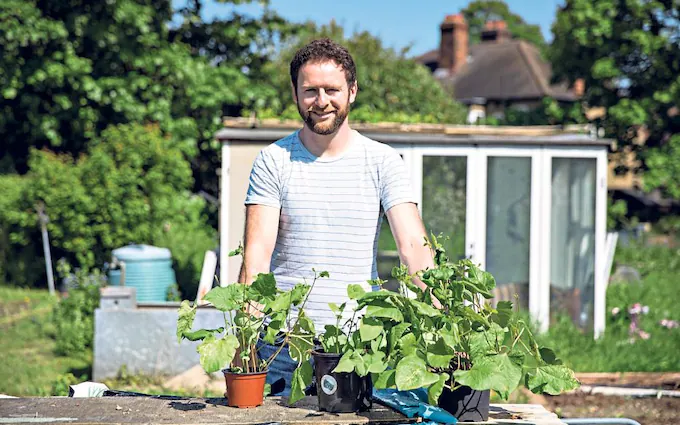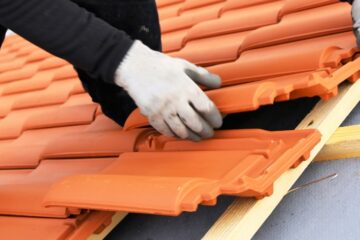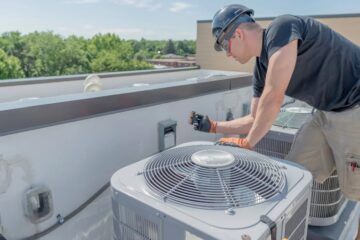10 Self-Seeding Plants for Busy Gardeners

A garden will make your space aesthetically pleasing and smell fresh. The act of cultivating it has been proven to boost mood and the immune system, contributing to longevity.
Many gardeners would like to garden more, whether for aesthetic, nutritional, or psychological purposes. However, work-life often stands in the way, so this is where self-seeding plants come in handy.
What Is a Self-seeding Plant
The name is self-explanatory. They tend to naturally self-produce seeds across the soil in your garden or indoor pots.
These new seeds take roots and steadily expand until they flower.
How to Grow Self-seeding Plants
Submerge the self-seeding plants into the soil until they swell and gradually grow into a new plant. This is nature’s way of succouring itself. By the summertime, they will dry out and drop onto the ground
Gardening Tools You Will NeedIf you are looking to grow your self-seeding plants, you will need specific gardening tools.Widger It is a crucial component of the seeding process. Its small slender shape allows it to easily pick out fragile seedlings from small cells and safeguard the shift of young plants.Hori Hori Knife
It is a multi-purpose tool in the garden. Its sharp saw-like edge is perfect for replanting and repotting size-based holes in the soil. This is essential for sustaining the lifespan of your transplants.
Rake
If you have a sizable garden, you need to invest in one. It is used for scooping, scraping, and gathering excesses like leaves and overflowing soil.
Planting Hoe
With its sparse spear-like edge, it is efficient for planting holes for your seedlings and placing them in the right spot with minimal disturbance to the surrounding soil.
Types of Self-seeding Plants
There are many various types that you can choose from. Here’s a comprehensive guide on how to plant 10 edible and ornamental self-seeding plants.
-
Poppies
Growing your own is an easy way to introduce a spectrum of colour to your surrounding space and garden.
When growing poppies, select a sunny spot with at least 6 hours of direct sunlight.
Weed out as much as you can because they prevent self-seeding plants from growing freely and healthily. Fine-comb with the rake to even out the soil and remove any excess that can hinder the growing process of your self-seeding plants.
Pour some poppy seeds into your hand and sprinkle them spontaneously across the soil to design diverse drifts.
On the other hand, you can systematically sow them in a single colour to add a monochromatic row to your garden which is guaranteed to stand out.
Give them 7-30 days to shoot out, depending on their quantity, soil condition, and temperatures.
-
Coriander
It grows effortlessly from seed into both leaves and new seeds. It’s a widely sought-after herb used in many dishes, especially in Mexican and Asian cuisines.
Coriander is best planted indoors in biodegradable containers. However, you can grow it by simply sowing seeds outdoors in the ground or in soil containers from spring onwards.
They sprout out spaciously, so plant them sporadically in the soil or in the borders of pots.
Before planting outdoors, the seedlings will need to solidify to acclimate to the outdoor environment. One week before planting, place transplants outdoors in a safe location for a few hours. Each day, increase the outdoor hourly exposure till it reaches 24 hours.
-
Lavender
It is an aesthetically pleasing purple plant native to the Mediterranean. Its flower and oil have a signature scent and are used for medical purposes.
Several studies show that lavender oil can improve sleep quality. In addition, it improves depression and anxiety symptoms.
Transfer seedlings to 2-inch wide pots when they have developed several sets of leaves.
The greatest threat to lavender seeds and seedlings is fungus. Keep the soil mix moist, but provide good air circulation to help reduce disease outbreaks.
Acclimate seedlings to outdoor growing conditions when lavender plants are 3 inches high.
Lavender seeds can take as long as a month to germinate, although sometimes they’ll sprout in as little as 14 days.
-
Cosmos
They are solitary flowers with a single row of large delicate petals surrounding a yellow centre.
They flourish in both sunny and shaded areas. Though they can thrive in relatively poor soil, they need constant watering and blossom best in well-drained soil.
Cut all the flowers underwater level with some scissors or a sharp knife. Hydrate what’s left in a solution of warm water for two hours before storage.
Medicinally, some studies show that it has antioxidants and a protective effect against oxidative DNA damage. It is also used to treat jaundice and fever.
-
Kale
It is a leafy green vegetable loaded with nutrients and vitamins. It has numerous health benefits, which include managing blood pressure and boosting digestive health. Not to mention, studies have correlated kale with preventing diseases like cancer.
It sprouts healthily in full sun, but will not be badly affected if exposed to partial shade. Plants that catch 6 hours of sun daily will not be as leafy as those that get direct sunlight for longer though. Nonetheless, they will still be edible and mostly as nutritious.
Prepare the soil with compost and fertiliser before seeping the seedlings into the soil. Apply them as per needed.
Place them separately in an area with full sun and fertile soil with a pH of 6.5 to 6.8. Try improving the quality of the soil by adding several inches of aged compost or rich organic matter.
After setting the equitable environment, kale leaves should be ready for picking in 55 to 75 days from seeding, or as soon as the leaves have grown similar to the size of your palm.
-
Sunflowers
They are annual plants that sprout at full force in sunny locations. They can be easily grown from seeds by directly placing them into the ground.
Sunflowers can also bud into full bloom indoors from transplants, which allows them to flower earlier than from direct seeding.
Plant their seeds 1 to 2 inches deep. Then, space seeds 6 inches apart for smaller quantities and 12 inches apart for bigger and taller quantities.
Once seedlings grow out into a saffron summery bloom, be sure to thin out as needed.
-
Dill
It is a common garden herb known for its medicinal properties and culinary transformative features when added to various dishes.
To grow your dill, it needs full sun as well as well-drained and low-fertility soils.
Slightly cover seeds with soil. After branching out, thin it out from the stems and be careful to not overwater.
-
Borage
Known as a starflower or a bee flower, this is a plant likely harvested for its seeds. It’s an annual 2-3 feet tall plant with blue striking star-shaped flowers and grey-green coloured leaves.
What’s so special about borage is its various medicinal powers as it treats seizures, kidney disease, insomnia, and water retention.
Its leaves are used as garnish and tea, while its seeds are used to make borage oil and supplements.
Borage grows in full-blown sun but will endure partial shade. It sprouts on any soil that is damp and muddy. In summer, it grows at its best and at full height. Like the other self-seeding plants, you can flexibly plant borage in containers too.
-
Potatoes
They need no introduction as they are used as a staple food in many parts of the world.
To plant your potatoes, half-dig each piece of potato 12-15 inches, with the rows spaced 3 feet apart. If your space is limited or if you only want to grow baby potatoes, you can decrease the spacing between plants. Make sure to regularly water them.
-
Sprouts
Grains, legumes, and greens spring up seeds which later shoot up leaves and flowers when exposed to moisture and sunny warmth.
Within a week, many sprouted plants are ready for edible consumption before their leaves grow. These are called microgreens, which are members of the microscale vegetable category.
To grow them, gently cover the sprout and seed with a potting mix to a depth equal to the width of the seed. A minimal amount of the mix should be covered over the sprout.
Use a spray bottle to lightly wet down the surface of the seed cell. Sprinkle regularly and keep the potting mix moist, but not wet.
How to Maintain Self-seeding Plants
They grow in congested clusters and won’t develop into healthy plants as a result. For this reason, thin them out, so that each plant has enough room to sprout.
You can also try lifting them carefully and potting them on the soil or into it. Then, remove any excess or unwanted seeds.
The purpose of hoeing is to split the plant stems at or just below ground level, thinning out top growth from its roots. So, routinely hoe the newly-emerged seedlings as soon as you see them.
Moreover, get rid of weed-killers, which control and kill self-sown seedlings. Use naturally occurring “active” ingredients, such as acetic acid and fatty acids.
Decreasing humidity is also an important factor in extending the life of seeds. In general, relative humidity below 60% is best for seed storage.
Avoid storing seeds in drawers or closed canisters where they are exposed to high humidity in the summer. Instead, store your seeds in a cool dry location away from direct sunlight.
If you have grown and harvested seeds yourself, make sure they are thoroughly dry before storage.
Gardening Services
These plants are pretty easy to grow by yourself. However, some people are too confused about which types to plant or how to maintain them for healthy growth.
If that’s the case, a professional gardener can help you. Specialists have the tools and knowledge to vigorously enhance your self-seeding garden.
Conclusion About Self-seeding plants
Many of us wish we could grow a blooming garden, but unfortunately don’t have the time or energy for it. That’s why self-seeding plants are a great idea.
Because they’re easy to plant and remarkably easy to maintain, busy gardening enthusiasts can easily create their little haven. Follow this guide to know how, and have fun!










